17 Hidden Florida State Parks That Feel Like The Caribbean—Plus 2 You Absolutely Can’t Miss
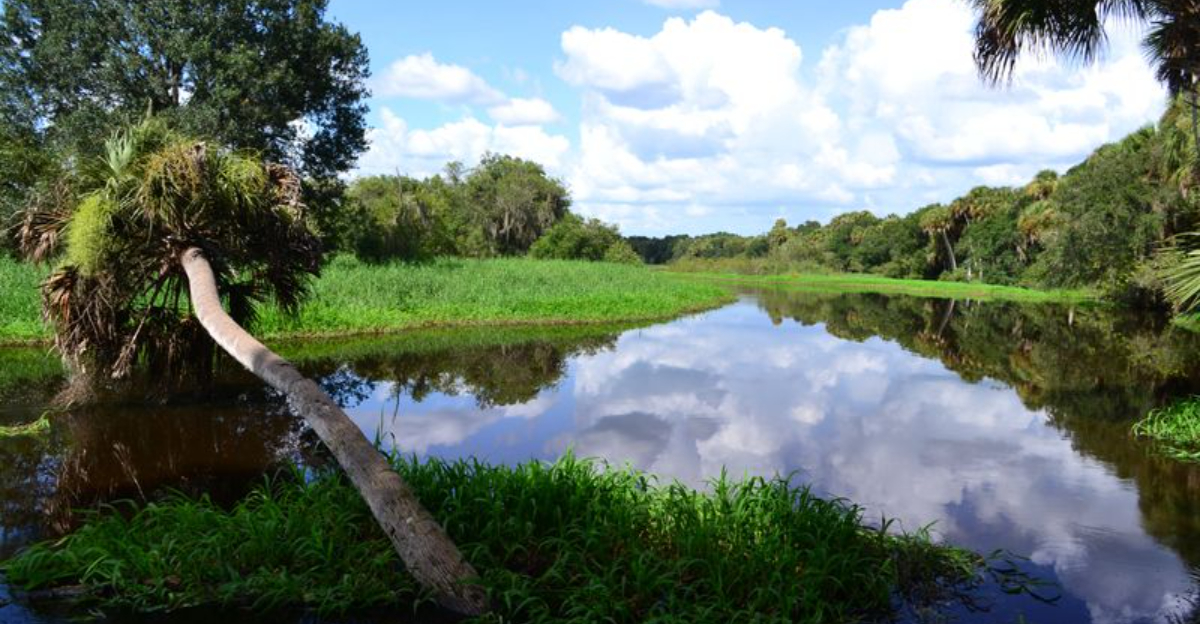
Tired of long lines and overpriced theme parks? Florida’s real magic is hiding in plain sight—inside its stunning state parks. Forget what you think you know about the Sunshine State.
Beyond the roller coasters and spring break hotspots lie serene beaches, vibrant springs, and tropical trails that feel more like the Caribbean than the continental U.S. I’ve wandered through mangrove tunnels, swum in sapphire springs, and lounged on shores with barely another soul in sight.
Curious where you can find these secret slices of paradise? I’m revealing 17 lesser-known Florida state parks that will seriously level up your travel game—plus 2 absolute must-sees you’ll regret skipping. Ready to discover Florida’s wild side? Let’s go exploring!
1. John Pennekamp Coral Reef State Park
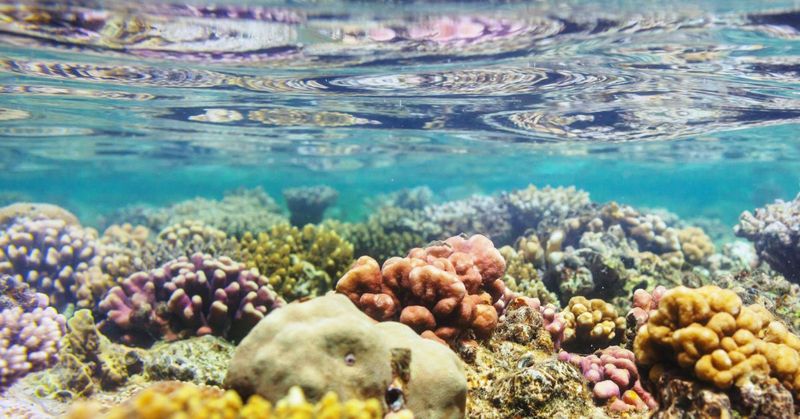
Floating above vibrant coral gardens at John Pennekamp feels like swimming in an enormous tropical aquarium. The nation’s first underwater park protects approximately 70 square miles of coral reefs, seagrass beds, and mangrove swamps.
Glass-bottom boat tours provide a dry alternative for witnessing the underwater spectacle. My favorite spot is the famous Christ of the Abyss statue, a 4,000-pound bronze Jesus with arms raised toward the surface.
Kayaking through the park’s mangrove trails offers a completely different perspective, where you might spot herons, egrets, and even manatees in cooler months. The park’s beaches are small but perfect for relaxing after exploring its underwater wonders.
2. Caladesi Island State Park
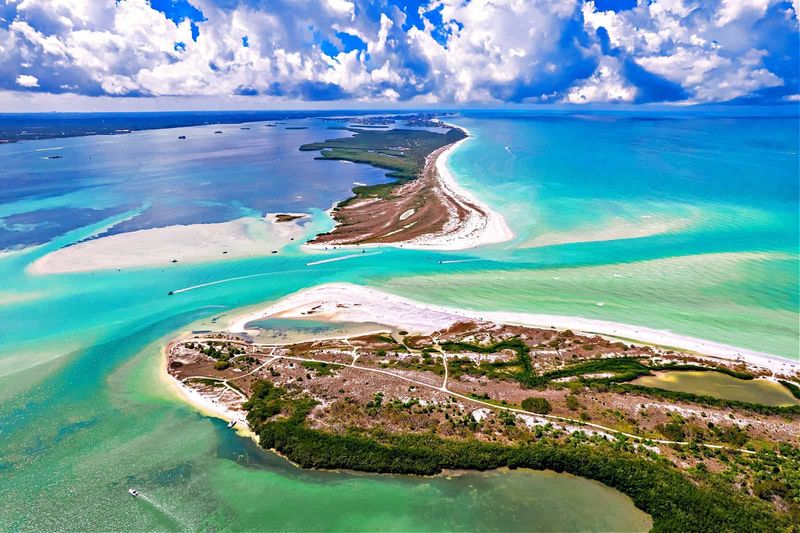
Only accessible by boat, Caladesi Island preserves one of Florida’s last untouched barrier islands. The ferry ride itself sets the stage for the secluded experience ahead – a true escape from civilization.
White sand beaches stretch for miles with hardly anyone around, even during peak season. I spent hours collecting perfect seashells that wash ashore in incredible numbers, especially after storms.
Hiking the island’s interior trail reveals a rare glimpse of what coastal Florida looked like before development. Kayaking through the mangrove forest waterways feels like exploring a natural maze. Rangers maintain the park meticulously while ensuring it stays wonderfully wild.
3. Cayo Costa State Park
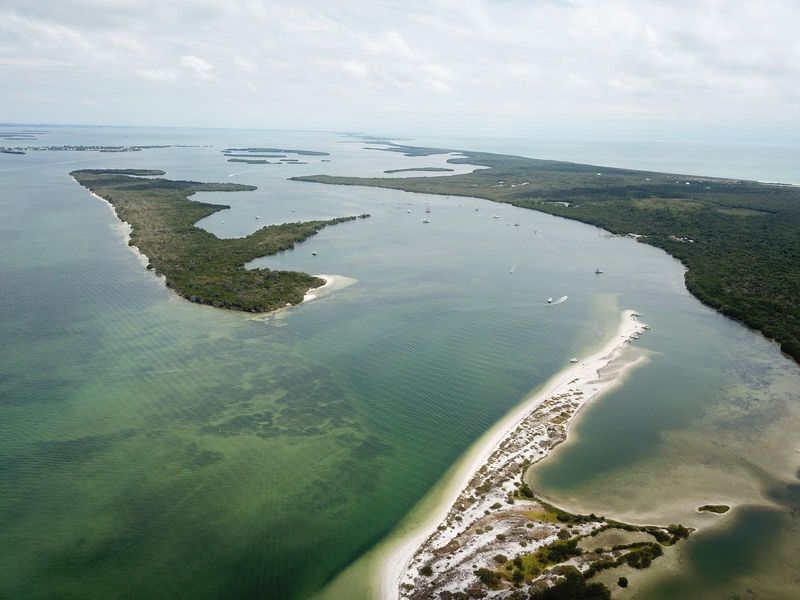
Wild and remote, Cayo Costa requires commitment to reach – a ferry or private boat is your only option. This effort filters out casual tourists, leaving nine miles of pristine shoreline to the truly adventurous.
Primitive cabins and campsites offer the rare opportunity to sleep under stars on a nearly deserted island. During my stay, I collected dozens of perfect sand dollars along shores that seemed untouched by human hands.
Dolphins frequently play in the waters just offshore, especially during morning hours. The island’s interior features slash pine forests and tropical hardwood hammocks teeming with wildlife. This park represents Florida as it existed centuries ago, before high-rises and highways transformed the coastline.
4. Bahia Honda State Park
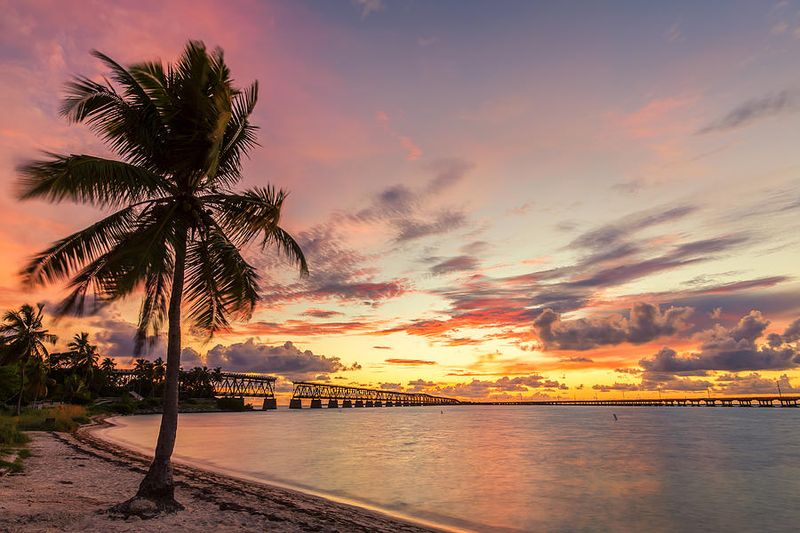
Sunsets at Bahia Honda transform the sky into a painter’s palette of oranges and pinks reflected in crystal-clear waters. Located in the Florida Keys, this park boasts beaches consistently ranked among America’s most beautiful.
Snorkeling near the old railroad bridge reveals vibrant marine life in shallow, accessible waters perfect for beginners. The iconic Bahia Honda Rail Bridge, partially destroyed by a hurricane, creates one of Florida’s most photographed scenes.
Camping here means waking up to sunrise over the Atlantic and ending your day with sunset over the Gulf – all within a short walk. The Butterfly Garden attracts colorful native species, adding splashes of moving color to the already spectacular landscape. Shallow water extends hundreds of feet offshore, creating ideal conditions for families.
5. Lovers Key State Park
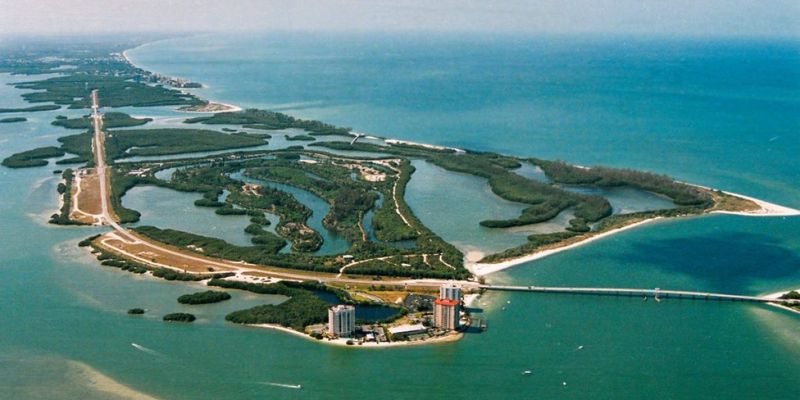
Once accessible only by boat and a favorite spot for romantic rendezvous (hence the name), Lovers Key now welcomes all to its four barrier islands. Manatees frequently visit the park’s protected waters, creating magical encounters for lucky kayakers.
Wildlife spotting reaches peak potential on the Black Island Trail, where gopher tortoises, osprey, and even bald eagles make regular appearances. The two-mile beach feels surprisingly uncrowded despite being just minutes from Fort Myers Beach.
Fishing from the park’s southern tip often yields impressive catches as fish gather in the deep-water pass. Paddleboarding through the calm backwaters provides intimate access to mangrove ecosystems teeming with juvenile fish and wading birds. The park’s concession rents all equipment needed for water adventures.
6. Hugh Taylor Birch State Park
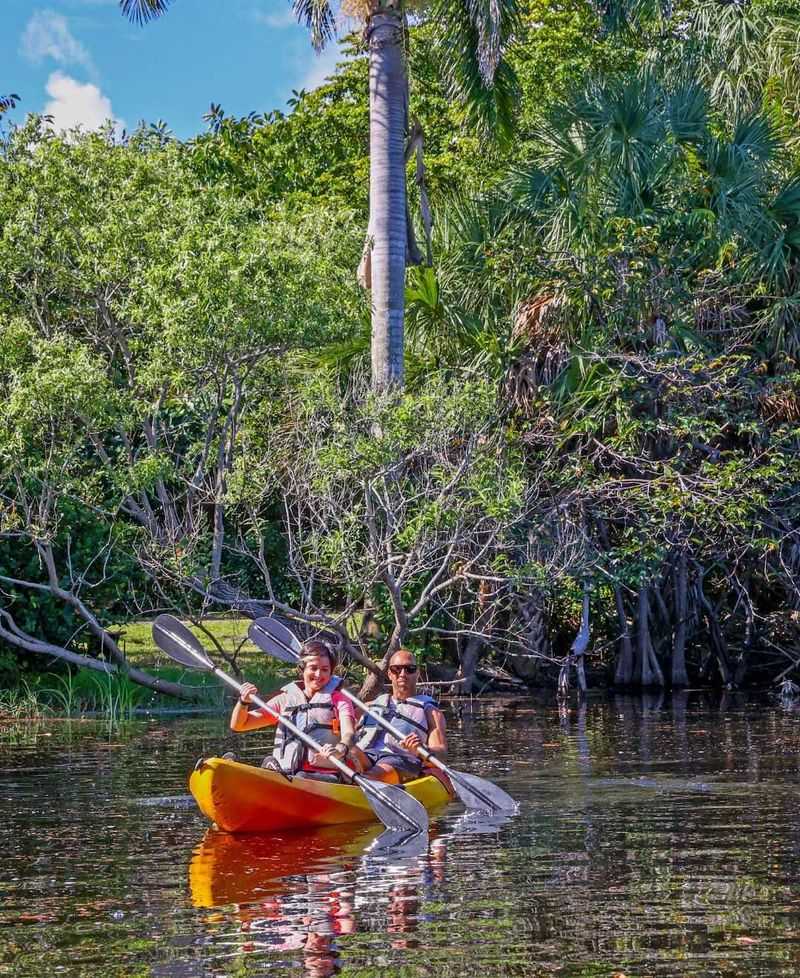
This unexpected oasis sits directly across from Fort Lauderdale Beach, creating a stark contrast between natural Florida and developed coastline. The park feels like stepping back in time, with a coastal hammock ecosystem that once dominated southeast Florida.
Paddling the freshwater lagoon that runs through the park’s center provides a peaceful escape from urban surroundings. Massive banyan trees create natural tunnels along the park’s trails, their aerial roots forming intricate wooden curtains.
Hugh Taylor Birch himself lived on this property and donated it to prevent development – his historic home now serves as a visitor center. The park’s location makes it possible to experience wild Florida in the morning and sophisticated Fort Lauderdale dining by evening. Biking the perimeter road offers exercise with frequent wildlife sightings.
7. Curry Hammock State Park
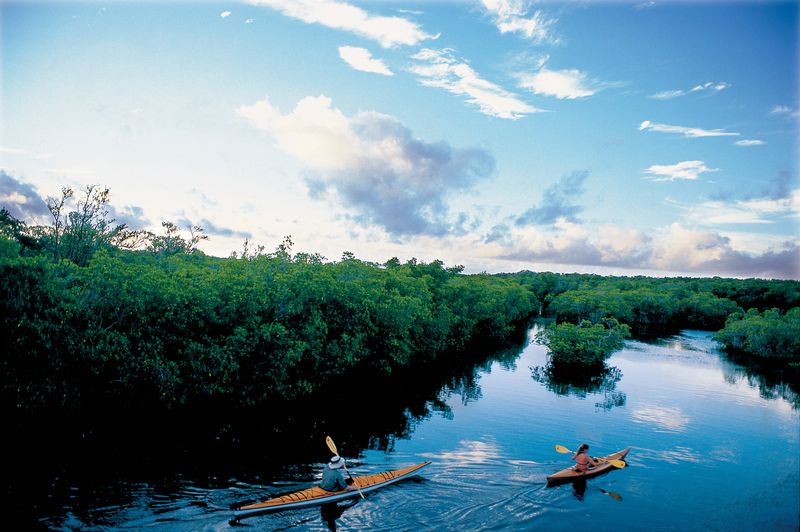
Hidden between more famous Keys destinations, Curry Hammock protects the largest undeveloped parcel of land in the Middle Keys. The shallow waters offshore create perfect conditions for kiteboarding, with consistent breezes attracting colorful kites year-round.
Kayaking through the park’s mangrove creeks reveals a maze-like waterworld where fish dart beneath your boat. I spotted a nurse shark nursery in the clear shallows – dozens of harmless baby sharks seeking sanctuary among mangrove roots.
Bird watching reaches its peak during fall migration when thousands of hawks pass overhead on their journey south. The campground sits remarkably close to the water, allowing campers to fall asleep to gentle waves. Despite being just off the Overseas Highway, the park maintains a sense of peaceful isolation.
8. Bill Baggs Cape Florida State Park
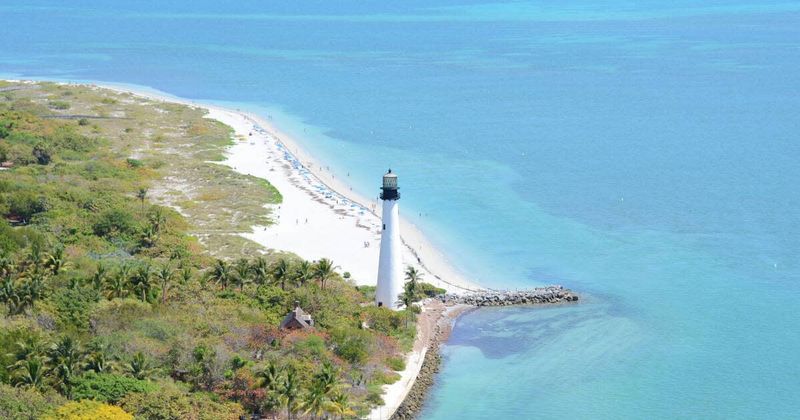
Standing atop Florida’s oldest lighthouse at Bill Baggs offers panoramic views of Miami’s skyline juxtaposed against undeveloped coastline. The park occupies the southern tip of Key Biscayne, creating a surprising wilderness just minutes from downtown Miami.
Beaches here consistently rank among America’s top ten, with gentle waves perfect for swimming. History comes alive during lighthouse tours where guides share tales of Seminole attacks, hurricane destruction, and the lighthouse keeper’s isolated existence.
Cuban influence permeates the park’s excellent seaside restaurant, where fresh seafood meets traditional island flavors. Fishing from the seawall often yields impressive catches as fish funnel through the nearby channel. Bicycle rentals provide the perfect way to explore the park’s full extent, from historic structures to natural beaches.
9. Fort Zachary Taylor State Park
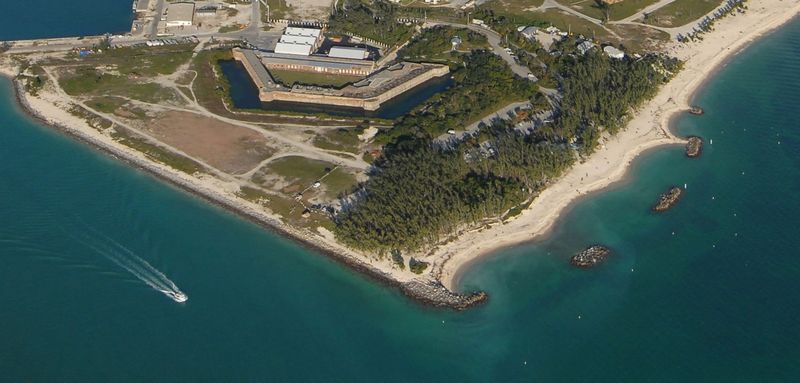
Key West’s best beach lies within this historic park, where the Atlantic Ocean meets the Gulf of Mexico in a swirl of multiple blue hues. The Civil War-era fort contains the nation’s largest collection of seacoast cannons, creating a fascinating blend of military history and natural beauty.
Snorkeling directly from shore reveals colorful fish darting among rocky outcroppings – no boat required. Unlike Key West’s artificial beaches, Fort Zachary Taylor features natural shoreline, though the coarse sand might surprise first-time visitors.
Sunset celebrations draw photographers and romantics to the park’s western shore, where the setting sun creates a daily spectacle. The park’s location at Key West’s tip provides cooler breezes than found elsewhere on the island. Local festivals frequently use the fort grounds, adding cultural experiences to the natural setting.
10. Sebastian Inlet State Park
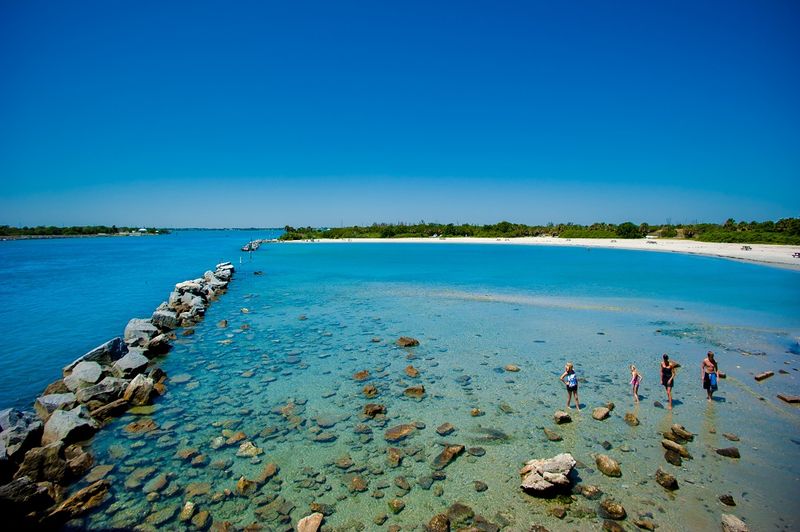
World-class surfing draws wave riders to Sebastian Inlet’s consistent breaks, particularly at the famous “First Peak” and “Monster Hole.” The park spans both sides of the inlet, creating distinct experiences depending on which shore you choose.
Fishing reaches legendary status here, with anglers lining the jetties day and night pursuing snook, redfish, and mackerel. History buffs appreciate exploring McLarty Treasure Museum, which showcases artifacts from the 1715 Spanish Treasure Fleet that wrecked offshore.
Camping near the thundering surf creates an immersive ocean experience unlike any other Florida park. Kayaking the protected waters of Indian River Lagoon reveals dolphins, manatees, and countless bird species. The park’s location on a narrow barrier island means you can watch sunrise over the Atlantic and sunset over the lagoon.
11. Grayton Beach State Park
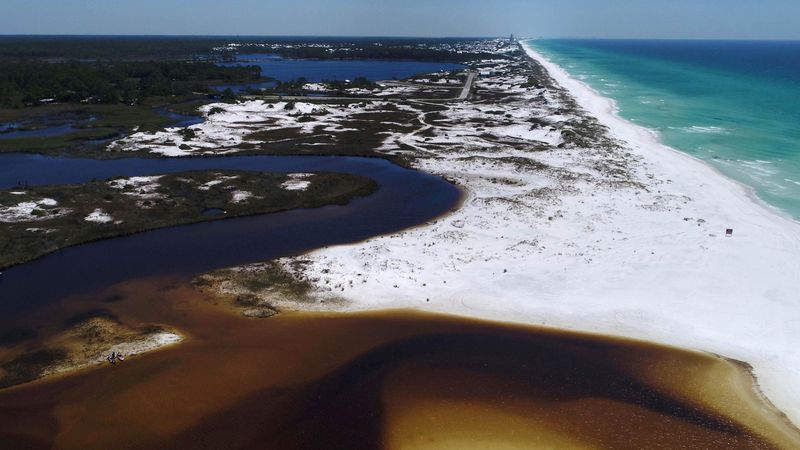
Sugar-white sand squeaks beneath your feet at Grayton Beach, where dunes rise like sculptures shaped by wind and time. This Panhandle paradise features the rare coastal dune lakes – a natural phenomenon found in only a few places worldwide.
Kayaking Western Lake offers a surreal experience as fresh water meets salt along a constantly changing shoreline. The park’s location along Scenic Highway 30A puts it near charming beach towns while maintaining its natural character.
Camping among scrub oaks and southern magnolias creates a distinctly northern Florida experience unlike the tropical parks further south. Hiking the nature trail reveals four distinct ecosystems within a one-mile loop. Morning fog sometimes blankets the dune lakes, creating ethereal scenes as the sun burns through the mist.
12. St. George Island State Park
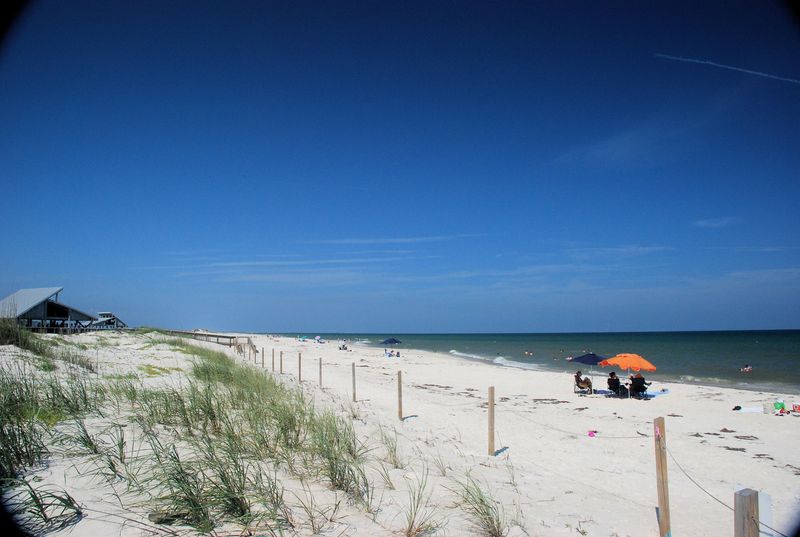
Miles of undeveloped beach stretch before you at St. George Island, where development restrictions preserve a coastal wilderness experience increasingly rare in Florida. The park occupies the eastern nine miles of this barrier island, ensuring its natural character remains intact.
Stargazing reaches spectacular heights here due to minimal light pollution – the Milky Way stretches across the night sky in breathtaking clarity. Shell collecting proves especially rewarding after storms, when the beach becomes decorated with countless perfect specimens.
Climbing the 92-foot observation tower rewards with panoramic views of Apalachicola Bay and the Gulf of Mexico. Fishing in the productive waters surrounding the island yields impressive catches year-round. The campground’s location behind protective dunes creates a sheltered haven even during breezy days.
13. Big Talbot Island State Park
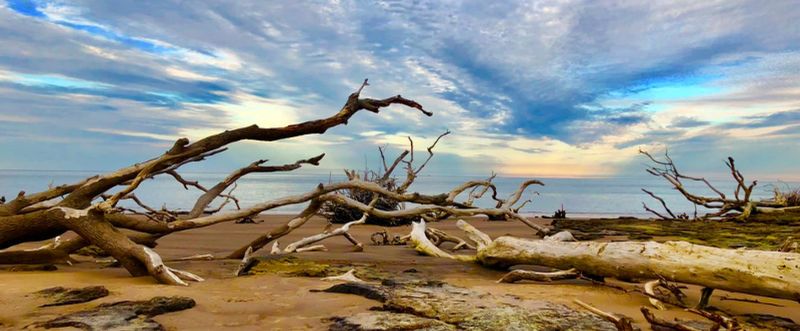
Fallen trees bleached white by sun and salt create an otherworldly landscape at Boneyard Beach, Big Talbot Island’s most famous feature. This erosion-shaped shoreline looks more like an art installation than a natural beach.
Photographers flock here for sunrise shoots when golden light illuminates the skeletal trees against dramatic skies. The maritime forest that covers much of the island features ancient live oaks draped with Spanish moss, creating magical light-filtered pathways.
Blackrock Trail leads to unusual black “rocks” that are actually compressed peat, a rare geological feature along Florida’s coast. Kayaking Myrtle Creek provides intimate access to pristine salt marshes teeming with birds and marine life. The park’s location near Jacksonville makes it accessible yet somehow still overlooked by many tourists.
14. Honeymoon Island State Park
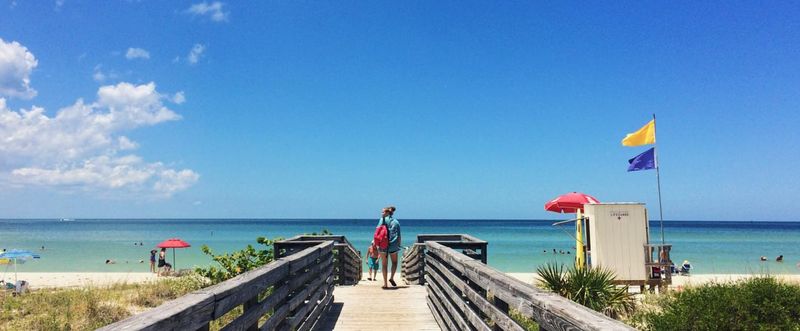
Despite its romantic name, Honeymoon Island offers much more than beaches for couples. Four miles of pristine shoreline provide ample space for visitors to spread out and find their perfect spot.
Wildlife thrives throughout the park, with an osprey trail where dozens of nesting pairs can be observed building nests and raising young. Shelling becomes competitive sport here, with collectors arriving at dawn to find treasures washed ashore overnight.
The pet-friendly northern beach makes this a rare destination where dogs can enjoy Florida’s coast alongside their owners. Cafe Honeymoon serves surprisingly good food with gulf views, eliminating the need to leave paradise for meals. Ferries depart regularly for neighboring Caladesi Island, creating easy access to two premier parks in one visit.
15. Myakka River State Park – Can’t Miss!
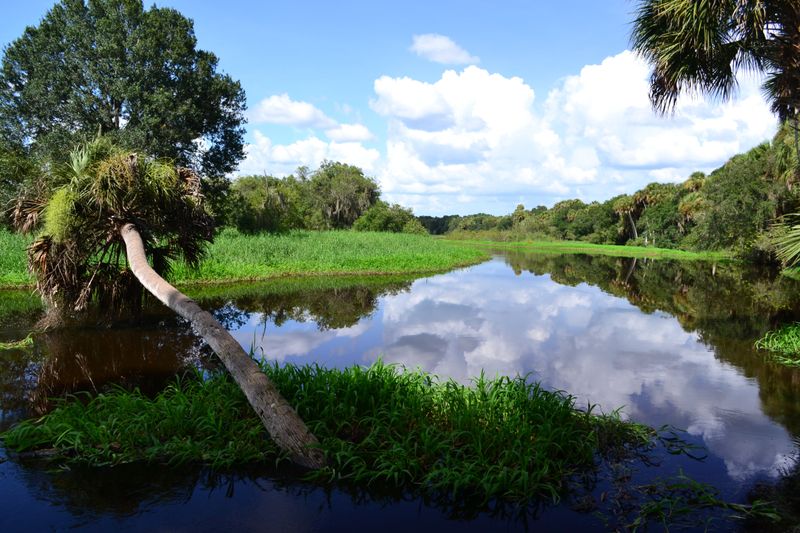
Alligators bask by the dozens along Myakka River’s banks, creating Florida’s most reliable wildlife viewing opportunities. The park’s massive size – 37,000 acres – preserves one of the state’s largest and most diverse natural areas just minutes from Sarasota.
Climbing the canopy walkway provides a squirrel’s-eye view of the forest from 25 feet above ground. The park’s prairie landscape differs dramatically from coastal parks, showcasing Florida’s surprising ecological diversity.
Airboat tours glide across Upper Myakka Lake, bringing visitors close to alligators, herons, and other wildlife without disturbing natural behaviors. Historic palm log cabins built by the Civilian Conservation Corps in the 1930s offer rustic accommodations for overnight adventures. This park simply cannot be missed by anyone seeking authentic Florida experiences beyond the beaches.
16. Dr. Julian G. Bruce St. George Island State Park
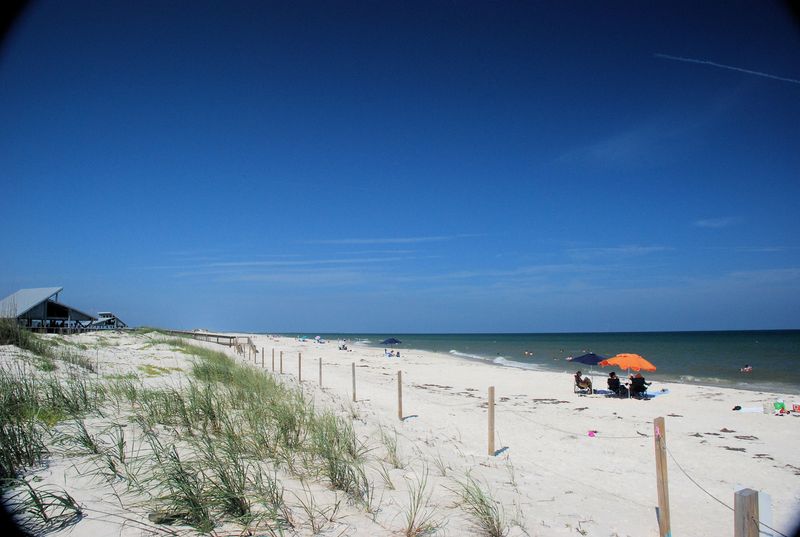
Uninterrupted natural beaches extend for miles at this remote park, where solitude comes standard with every visit. The park occupies the eastern third of St. George Island, preserving a barrier island ecosystem in its natural state.
Birding reaches peak excitement during migration seasons when the island becomes a crucial stopover for exhausted travelers crossing the Gulf of Mexico. The campground sits tucked behind protective dunes, creating comfortable sites even during windy conditions.
Kayaking the bay side reveals vast seagrass meadows where you might spot rays, turtles, and fish in crystal clear shallows. Rangers offer interpretive programs that bring the island’s complex ecosystem to life through engaging stories. This park exemplifies Old Florida – natural, peaceful, and relatively undiscovered despite its extraordinary beauty.
17. Oleta River State Park
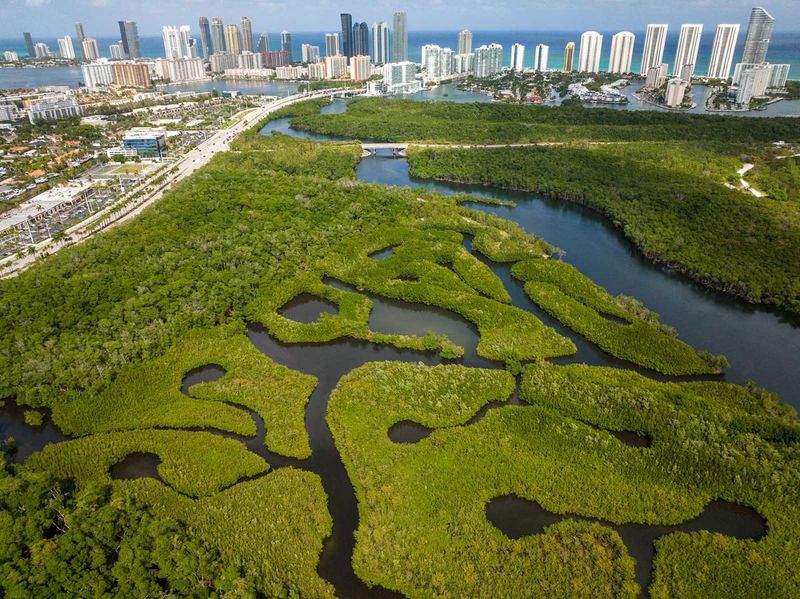
Surrounded by Miami’s urban sprawl, Oleta River creates an unexpected wilderness experience in Florida’s most developed region. Mountain biking trails range from beginner-friendly loops to challenging technical sections that surprise first-time visitors.
Kayaking the mangrove tunnels feels like entering a secret world where city sounds fade and wildlife thrives. The park’s rustic cabins offer an affordable overnight adventure minutes from downtown Miami – an extraordinary urban camping experience.
Swimming at the park’s protected beach provides safe water access without strong currents or deep drop-offs. Blue marlin fishing charters depart from nearby Haulover Inlet, creating easy access to world-class offshore action. This park demonstrates Florida’s commitment to preserving natural spaces even within densely populated areas.
18. Henderson Beach State Park
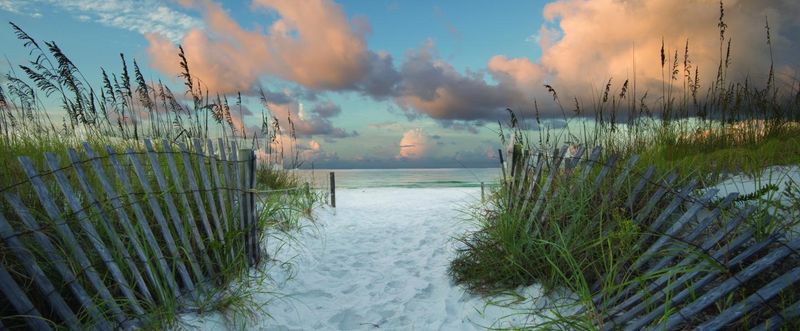
Sugar-white sand dunes rise 30 feet above emerald waters at Henderson Beach, creating one of Florida’s most striking coastal landscapes. The sand here consists of pure Appalachian quartz, explaining its extraordinary white color and cool feel underfoot even on hot days.
Walking the boardwalk through protected dunes reveals a complex ecosystem where rare beach mice and nesting sea turtles find sanctuary. Despite proximity to Destin’s busy tourist areas, the park maintains a natural, peaceful atmosphere.
Snorkeling near the shore often reveals pompano, whiting, and catfish swimming in clear waters. The campground renovation completed in 2020 created some of Florida’s most comfortable state park camping facilities. Sunset gatherings become impromptu community events as campers gather to applaud nature’s nightly show.
19. Ichetucknee Springs State Park – Can’t Miss!
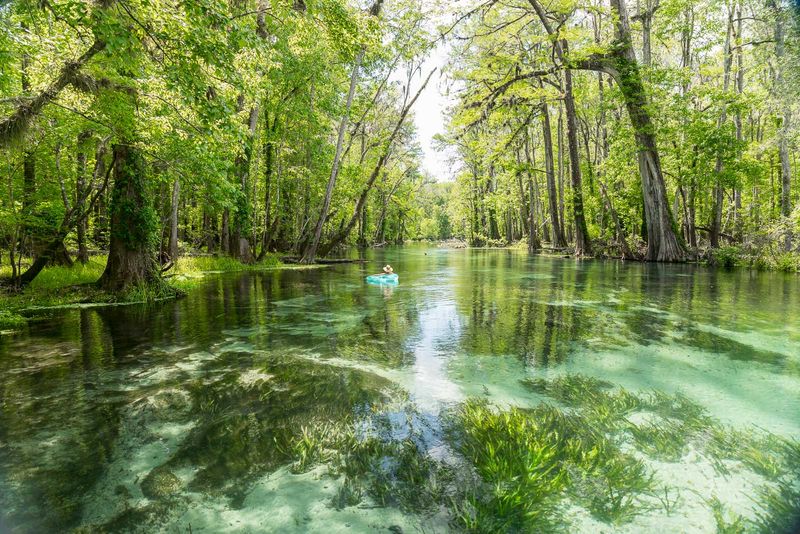
Crystal-clear water flowing from pristine springs creates nature’s perfect lazy river at Ichetucknee. The water maintains a constant 72 degrees year-round, offering refreshing relief during hot summers and surprisingly warm swimming during winter months.
Tubing the river has become a beloved Florida tradition, with thousands floating the transparent waters each summer. Beneath the surface, a complex underwater cave system feeds the springs with filtered water that took decades to journey through limestone.
Manatees frequently visit the lower springs during winter, creating magical encounters for lucky paddlers. The headspring’s blue hole seems to glow from within, creating an otherworldly azure color that must be seen to be believed. This park represents Florida’s spring system at its most pristine and accessible – an absolute must-visit.
